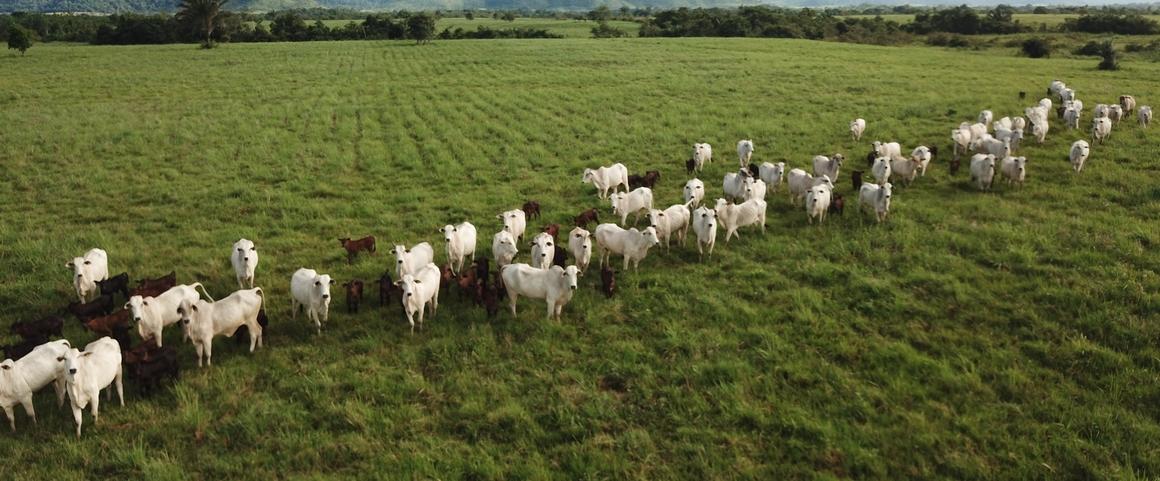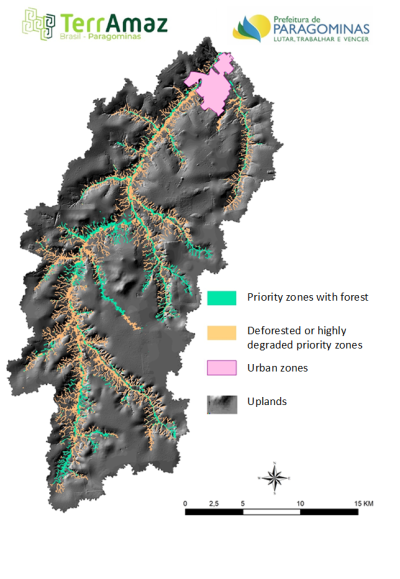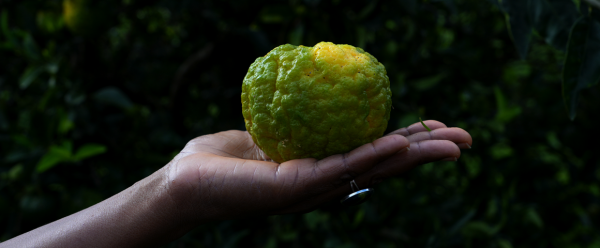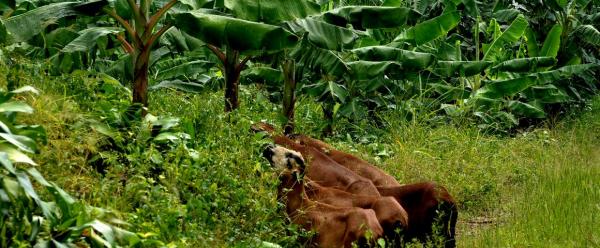Science at work 19 December 2025
- Home
- CIRAD news
- News
- Livestock and forests in the Amazon
Improved farming practices foster the return of forest | Lessons from the Amazon

In Paragominas, Brazil, rotational grazing is boosting productivity per hectare and encouraging livestock farmers to leave slopes fallow, since such areas are difficult to access and plough © R. Poccard-Chapuis, Cirad
“In the past, farmers let their cattle graze wherever they wanted, and the use of fire ruled out any forest regrowth. With technical support from the TerrAmaz project, they are being helped to choose the best land for rotational grazing. This improves both the animals’ diet and soil fertility, and unused land is left fallow.”
René Poccard-Chapuis is a geographer with CIRAD and is coordinating the TerrAmaz project’s activities in Paragominas, Brazil. Those activities combine rural development and forest management, and are backed by a simple principle: organizing landscapes according to soil properties.
“Clay plateaus, for instance, are perfect for agricultural activities", the scientist says. “All slopes, on the other hand, are better used for trees, which provide vital ecosystem services. Storing carbon, filtering rainwater and limiting erosion are all services whose absence very quickly makes itself noticed.”
Bringing trees back to the paths taken by water in Paragominas
Several of TerrAmaz’s activities in Paragominas make use of mapping tools to steer and monitor land use changes precisely. In agreement with the local water board, the maps produced serve to pinpoint zones that should be reforested as a priority, to improve water resources.
“Forest cover in the areas where water runs off or collects acts as a filter”, René Poccard-Chapuis says. “Treating water in Paragominas is currently very costly, since it contains a lot of suspended particles, due to soil erosion.”
Slopes, ravines and floodplains are extremely difficult to plough and are of little use for agriculture. They are already beginning to be abandoned and forest is becoming established. To speed up and extend the restoration process, the Paragominas water board is keen to encourage farmers, through payments for ecosystem services. The scheme would be funded by people in urban areas and supported by the town council, by means of a geographic information system.
A dynamic that exists in several parts of the Amazon
Several areas where TerrAmaz works – not just Paragominas but also Cotriguaçu in Brazil and Guaviare in Colombia – have embarked on the same dynamic, albeit using different tools.
In Guaviare, 35 livestock farmers have signed forest resource conservation agreements and received individual funding to improve their husbandry practices. Those agreements currently cover 930 hectares of forest, or 30% of the total area of farmland in the municipality.
CIRAD agronomist Marie-Gabrielle Piketty is leading the TerrAmaz project. She is enthusiastic about the initial results: “TerrAmaz is helping to support and capitalize on these initiatives in several parts of the Amazon, to allow them to expand. Local government and development players are working together on this, which is vital.”
TerrAmaz is funded by the Agence française de développement and is due to run from 2020 to 2024. In a few years’ time, scientists will be able to determine precisely the economic, ecological and social advantages of these innovative landscapes.




























